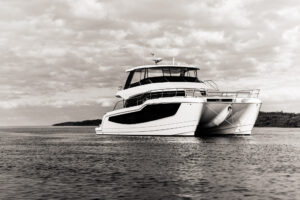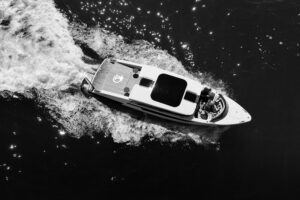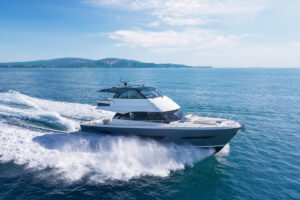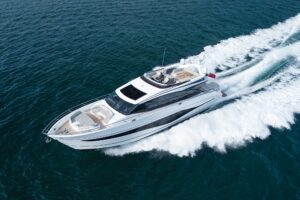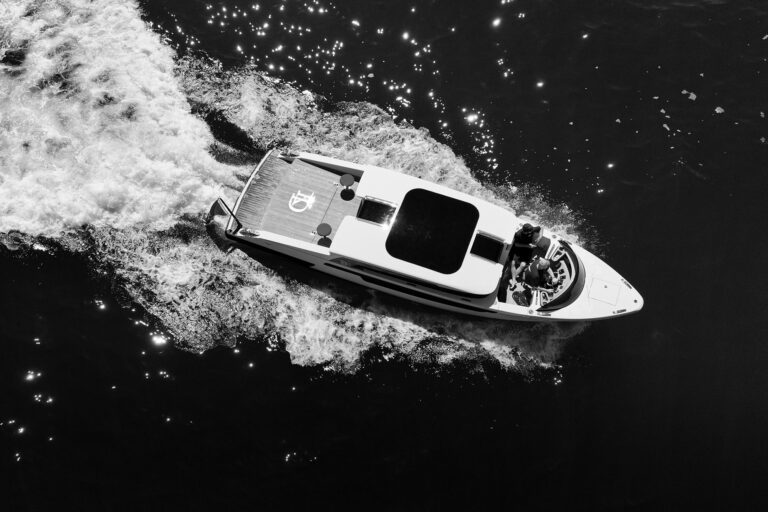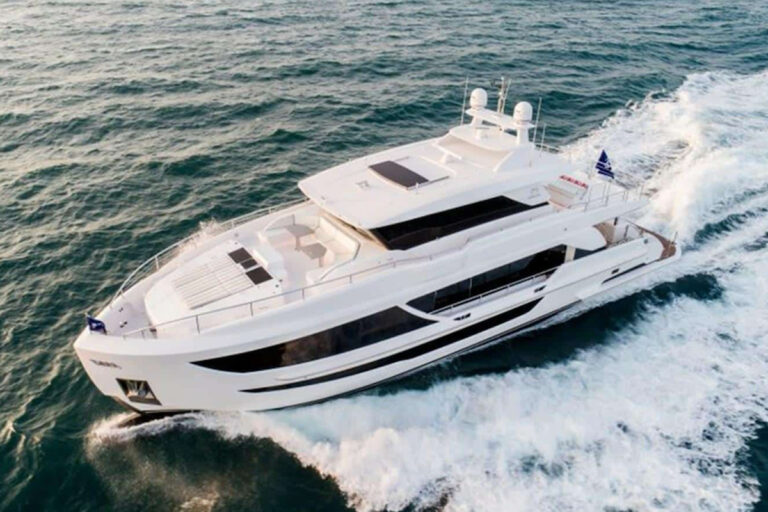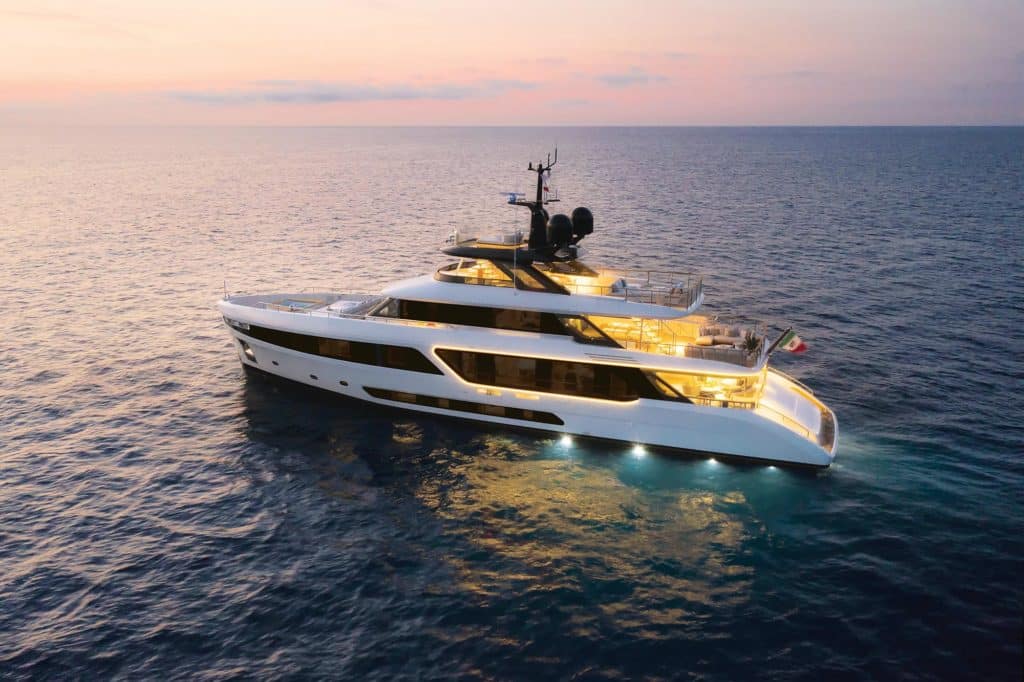
Every few years in design—be it for fashion or home decor—a trend comes back in a renewed way. Last year, for example, a number of designers embraced the bright color bombs from the 1990s to draw more attention to walls, railings, kitchen cabinetry—you name it. Other designers channeled the 1960s and 1970s in everything from album art to area rugs.
These fun, funky, even psychedelic styles were a far cry from the minimalist, geometric simplicity that became trendy about five years ago. The throwbacks weren’t bold for bold’s sake or retro for retro’s sake, either. Rather, visual distinctiveness was the order of the day.
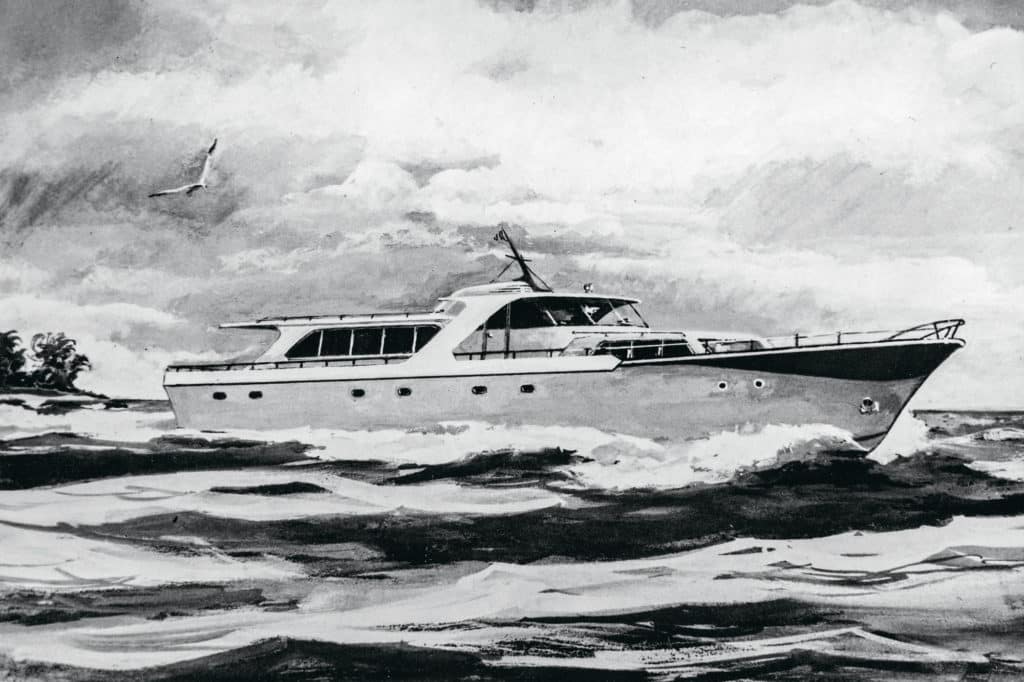
Benetti has been thinking about this concept since 2020. The shipyard wanted to create a yacht that hearkened back to some of its deliveries from the 1960s and 1970s, in terms of exterior styling and interior design. However, the yacht also needed to appeal to today’s cruisers, who expect amenities that didn’t exist 50 years ago.
The result is the Benetti Motopanfilo 37M.
“It’s not nostalgic,” says Carl Pickering of Lazzarini Pickering Architetti, the design studio responsible for the interior. “We wanted to return to a more nautical language.”
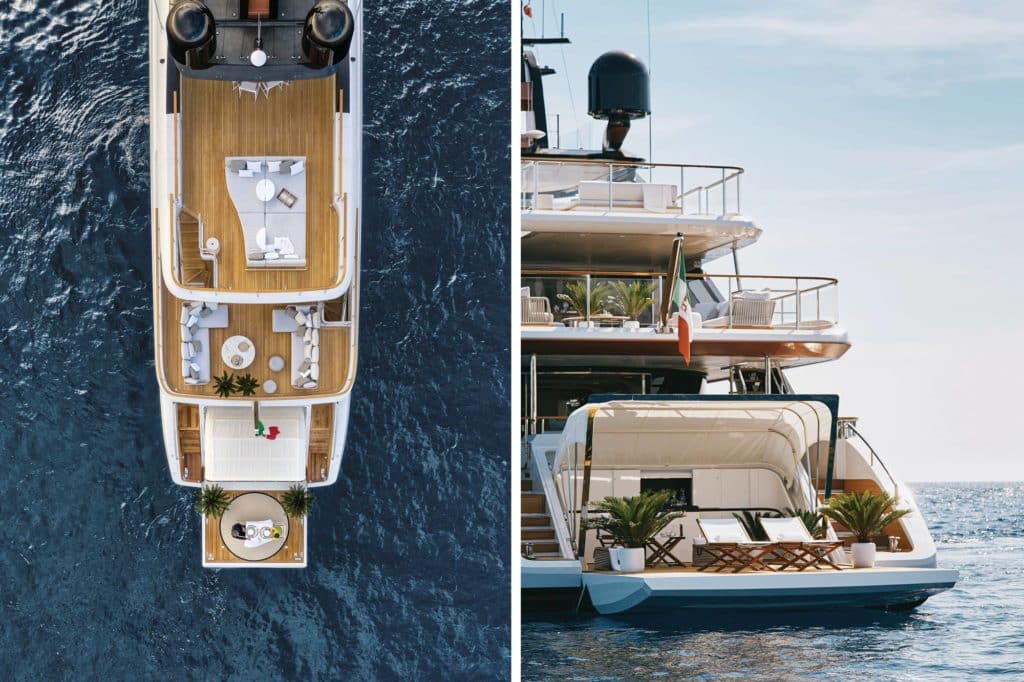
Pickering and his business partner, Claudio Lazzarini, felt it was crucial that this yacht look like a yacht and not a floating home. So did Benetti and exterior stylist Francesco Struglia. The nearly 122-foot Motopanfilo (pronounced “moh-toh-pan-fee-loh”) 37M appears much more linear compared with modern mega-yachts, much the way recreational craft did five decades ago. Ribbons of bronze paint rim the after bulwarks, further outlining the upper-deck overhang. Struglia wanted to capture the essence of classic wood cap rails.
He also captured the essence of classically rounded transoms with a slightly curved design. It’s a look that went by the wayside when designers began incorporating integral swim platforms, which have only gotten wider and deeper in recent years. The Motopanfilo 37M does have a beach club, thanks to the fold-down transom. Because the yacht is semicustom, the beach club can include whatever clients wish. The owners of Hull No. 1, Koju, chose a hidden sink and a removable, hooded sunshade, the latter designed by Lazzarini Pickering.
Also at the waterline, the yacht has a modern-day must: a tender garage. It’s a side-launching area, capable of holding PWC and a traditional tender.
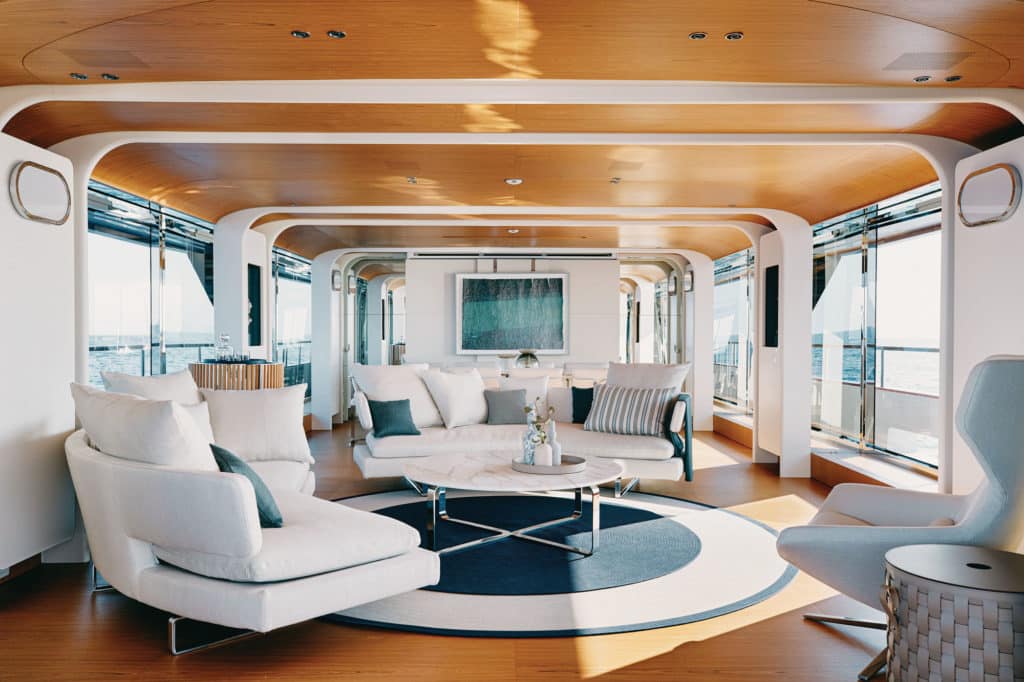
The strongest connection between the nautical past and present, however, comes inside. Gone are the primarily lacquered surfaces that, in recent years, relegated wood to soles. Gone too are the grays and other muted tones of surfaces and soft goods, as well as austerely shaped furnishings and accessories. As Pickering says, these seemed to step straight out of a home in Architectural Digest, not really the essence of a yacht. Instead, the owners of Koju embraced Lazzarini Pickering’s initial concept of pale, matte-finished wood underfoot and overhead.
Koju also has a series of striking arches, meant to mimic a whale’s ribs. The arches, in white lacquer with swaths of pale oak between them overhead, flow forward through the salon and dining area. The walls of the four guest staterooms belowdecks follow suit; their arches are wood, and the spaces between are lacquered. The walls also follow the natural shape of the hull, eschewing the common practice of squaring everything off and making it more residential-like.
“The luxury in a boat is in space—real or perceived,” Pickering says. The sense of space amid the 25-foot-3-inch beam is palpable, thanks to those ribs and shapes. It also helps that the yacht has large ports in keeping with current trends, as well as crisp white furnishings and accessories, with navy blues for extra nautical measure. The whalebone elements are practical as well: They serve as art niches in some areas and stowage in others, and they further hide the trunks for the air conditioning.
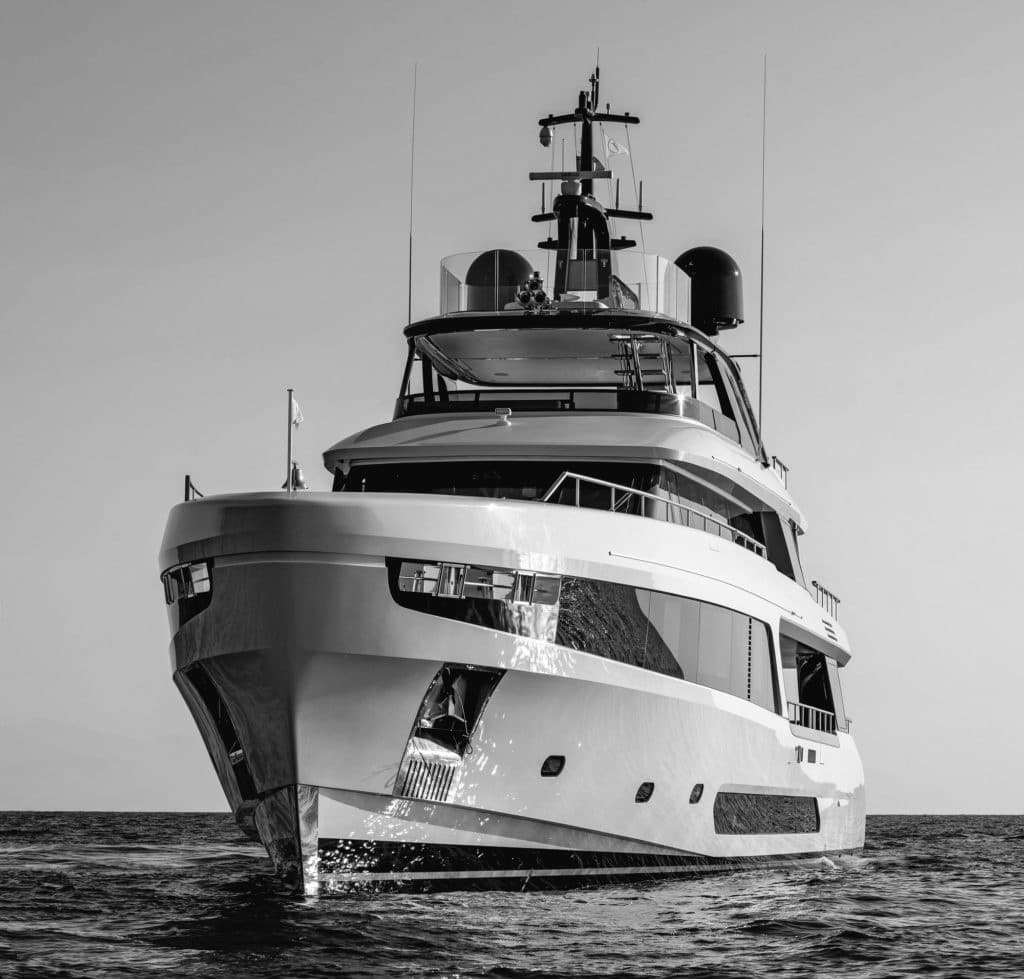
“Practical” is a good description for the overall ambience on board Koju. The curved, sliding glass doors between the salon and main deck aft can remain open all day long for owners or guests. Lazzarini Pickering recommended that the white and blue fabrics it designed for the inside also be used outside—and be able to hold up to salty swimmers.
Because as much as some things change, they also remain the same.
The Name Game
In Italian, moto panfilo means “motoryacht.” The term became associated decades ago with the large craft enjoyed by celebrities, royalty and other elites. For instance, Monaco’s Prince Rainier III and Princess Grace were photographed aboard a Benetti moto panfilo.
Material Matters
Benetti looked to the 1960s for inspiration on the Motopanfilo. Notably, that era marked an important period in the yard’s own history. The year 1960 was when the shipyard switched from using wood to using metal for its yachts.
Aerie Advantage
Unless you were aboard the yacht or standing dockside while someone was up top, you’d never know the Motopanfilo 37M has a fourth deck. It’s an observation area. Glass windscreens protect the sun pad that occupies most of the space.
Take the next step: benettiyachts.it

